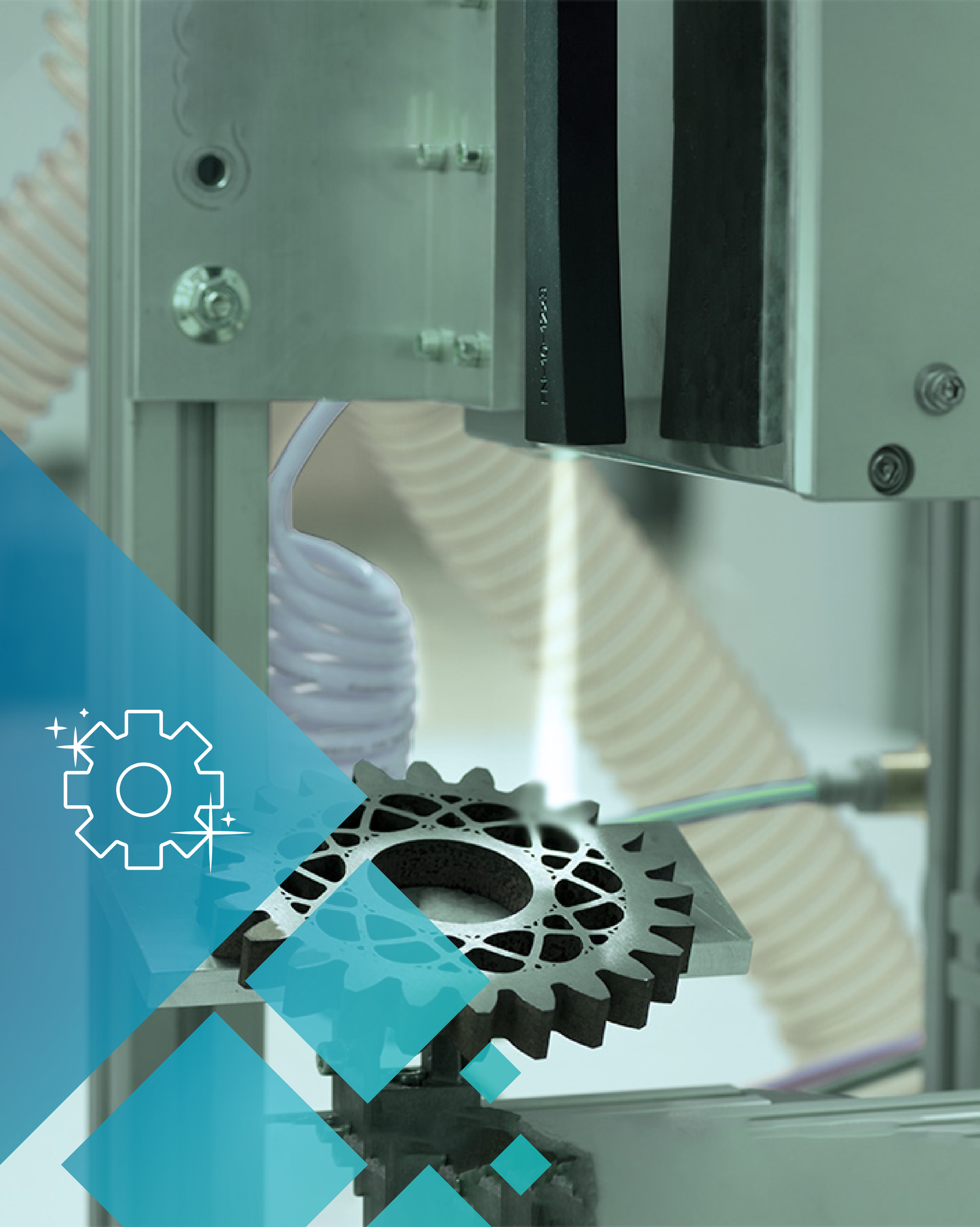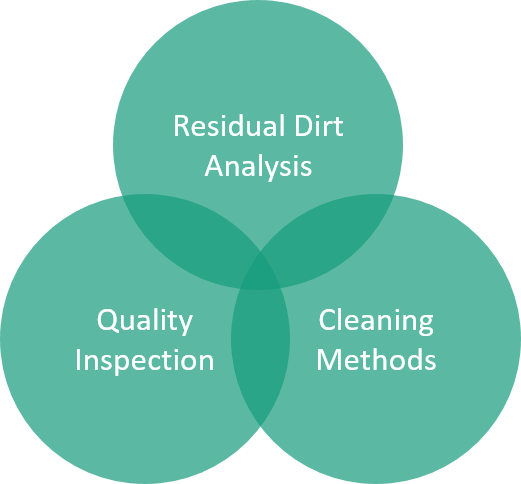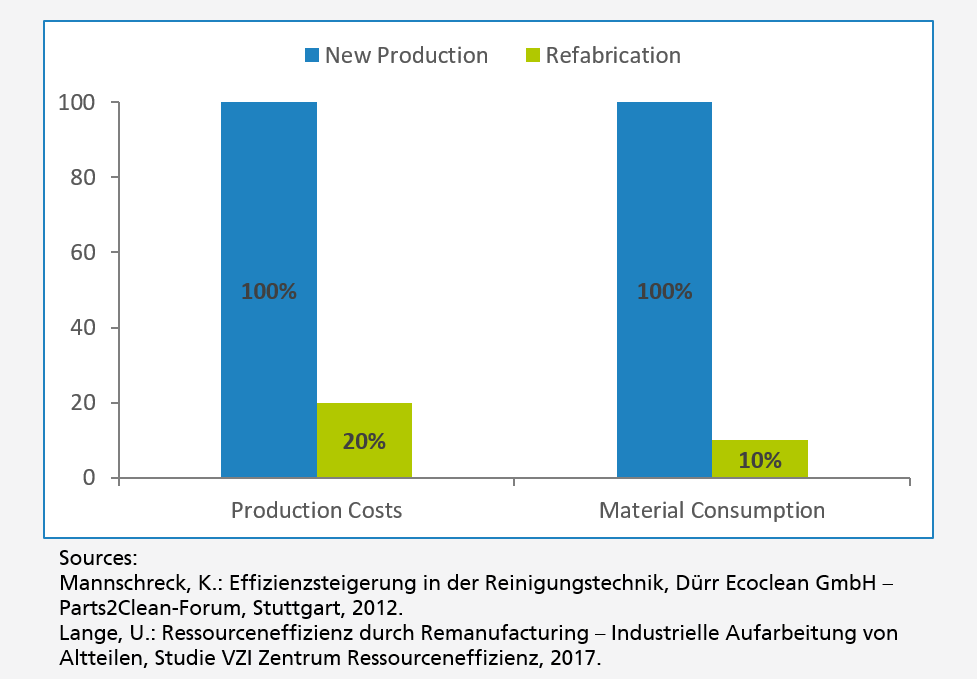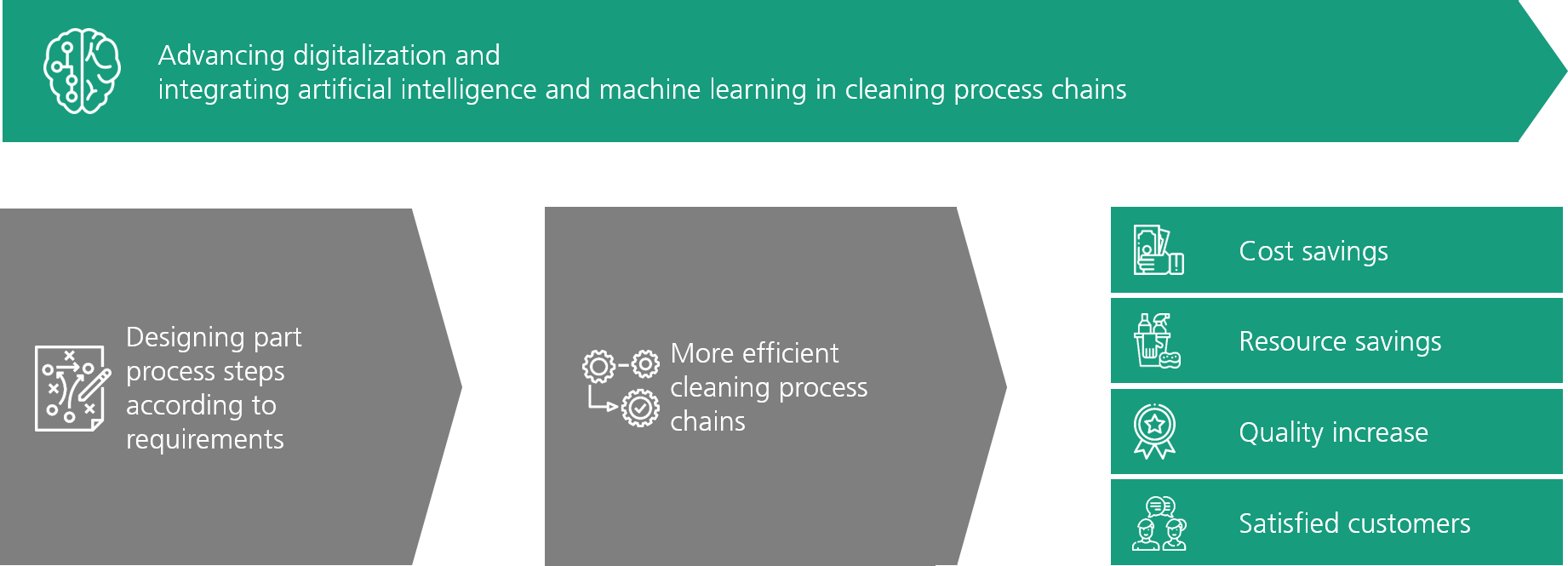Technical cleanliness gains importance, not least because of the steadily increasing complexity of production processes. A component is described as »technically clean« if it has a sufficiently low level of contamination. To achieve this, undesirable substances (contaminants) are checked and removed from the workpieces' surface to a required, agreed, or possible degree. Likewise, the condition of the component is accurately recorded. Contaminants that occur during production can be particulate or filmic. Examples include particles, chemicals, oils, greases, chips, fibers, oxides, rust, or scale.
Technical cleanliness and non-destructive testing are becoming more important in the manufacturing industry in recent years. In non-destructive testing, the quality of a component is tested without damaging or destroying the workpiece. This means that defective components can be detected quickly and removed from further processing in good time. Both methods now play a significant and success-determining role and are attracting increasing attention.



